
|
Japanese External Reverse Porro Prism Binoculars. WEBSITE MUSEUM |
|
OTHER BINOCULARS #7 & OPTICAL SIGHTS |
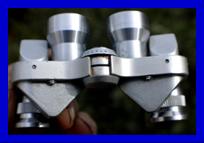
|
US Army Signal Corps 7x50 binoculars of Task Force 43/ Operation Deep Freeze member Antarctic Explorer Amory H. Bud Waite (11 Arctic Expeditions, and congressional medal) |
|
My U.S. Army Signal Corps “ Task Force 43 ” “ Operation Deep Freeze ”, and “ Waite ” marked binoculars are another example of where an object itself is far less interesting than it’s associations to remarkable events. These military binoculars previously were issued to Amory H. Bud Waite, who was radio operator on eleven Antarctic expeditions and many other polar expeditions. While Waite was on Admiral Byrd’s 1933 second Antarctic expedition in July/Aug. 1934, stationed at the Little America Antarctic base, Waite was credited with all 3 attempts to rescue Admiral Byrd from a remote base (hut), including the successful rescue involving a 123 mi trek by Citroen tractor for 70 straight hours by 3 men in -70 ° F average temperatures ( -56.7 ° C) to reach the barely alive Byrd at the Boiling Weather Station hut on the Ross Ice shelf, where the 4 men subsequently spent 10 weeks in the 9 foot by 13 foot hut while Byrd recovered from long term carbon monoxide poisoning. Waite received a congressional medal for it. These binoculars probably date to Waite’s involvement in 1946-47 Antarctic Operation Highjump where he was a US Army Signal Corps observer, or to his 1954-55 time aboard the icebreaker U.S.S. Antka circumnavigating the Antarctic, and these are marked for his eight 1956-65 Operation Deep Freeze expeditions and time with Task Force 43, which was the nine ships of the 1955-65 Deep Freeze Expeditions. These binoculars have no visible manufacturer markings, but appear to be the Bausch and Lomb 7x50 binocular design in m24 case that the US govenment bought in large quantity from many companies in many variations, with the hard life these had and an old repaint having obscuring markings. |
|
1990’s Chinese PLA/ Peoples Liberation Army Type 62-8WYJ 8x30 Military Binoculars Factory #298/ Yunnan Yuanjin Optical Co. |
|
My Type 62 8x30 Peoples Liberation Army/ Chinese military pattern binoculars were made at factory #298, which later became Yunnan Yuanjin Optical Co. These Type 62 binoculars were PLA issue from the 1960’s-1990s, but were also made for and were supplied to the military forces of other countries such as North Vietnam/Vietnam. These binoculars were claimed to be 1990’s production NOS, and with engraved rather than silk screen markings they may well be 1990’s , but the basic design is still in production. These binoculars have odd pellet filled desiccant compartments. |
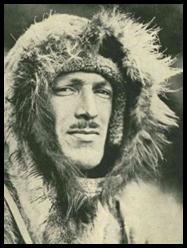
|
Bud Waite |
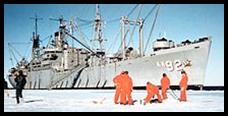
|
Task Force 43 ship USS Wyandot of operation Deep Freeze |
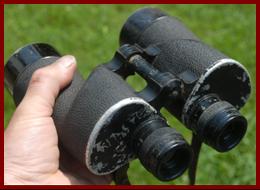
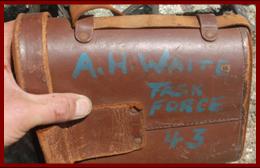
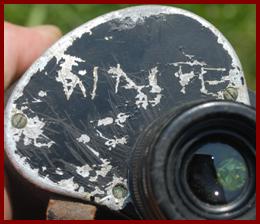
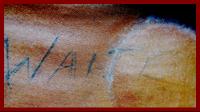

|
1941 Anchor Optical Corp. 7x50 U.S. Navy Binoculars Mk 1 Mod 2 |
|
Ca 1919-1921 Carl Zeiss Jena Silvamar Binoculars Donated to the US Navy in 1942 for WWII use, with Documented pre and post war Owners, and Returned to Owner at War’s end |
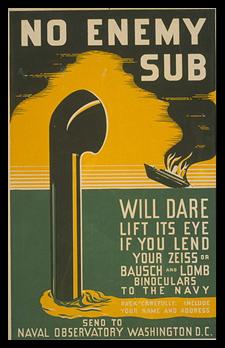
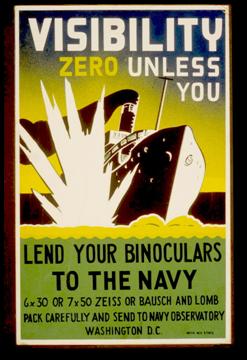
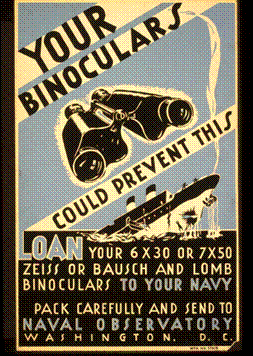
|
Around 1942, as the US became more involved in the Battle of the Atlantic, and as German U boats became more active near US shores, the U.S. govt. launched a public campaign for civilians to “lend” Zeiss and Bausch and Lomb binoculars to the US Navy with a promise of returning them later. U.S. wars (as largely foreign territory wars) tend to be a struggle of interests between those in favor and opposed, with influencing public opinion a key factor in the political power to proceed. So the campaign to donate binoculars (with WPA/ Works Project Administration) assistance was as much a means to manipulate and control public opinion as it was a materials acquisition effort. Of course many of the donated binoculars were probably not useful. It appears that those actually suitable to be issued were marked with an acquisition year, an acquisition number, and the name of the owner “loaning them”. Owners were paid $1 loan compensation, which was part of a liability waiver. These circa 1919-1921 Carl Zeiss Jena Silvamar binoculars serial number 964,608 were donated by Samuel Margolies and taken into US Navy use in 1942 and were marked “ BU SHIPS”; “U.S. NAVY”; “TREATED M.I. N.Y”; (probably Materials Inspection); “No. 2714”; 1942” and “SAMUEL MARGOLIES” at than time. BuShips was the US Navy Bureau of Ships, which was created in June 1940, and managed procurement. |
|
Anchor Optical Corp of NY was one of 6 companies to whom leading US optical company Bausch and Lomb licensed their designs, and who they assisted to gear up and produce US military binoculars in WWII (per Company Seven). My 1941 Anchor Optical Co US Navy 7x50 Mk1 Model 2 ser # 8030 binoculars are typical of these. BuShips was the US Navy Bureau of Ships, which was created in June 1940. |
|
After the war, these binoculars were returned to Samuel Margolies, and then passed on to his son Roy S. Margolies of Mountainside NJ (himself a WWII navy vet who served as engineer on LST 741 during Landings in Leyte Gulf, Lingayen Gulf, and Mindoro Gulf), and who then died at age 90 in 2013. The New Jersey state drivers license number scratched on these binoculars is presumably that of Roy S. Margolis, as that practice was promoted as a theft deterrent measure around the 1960’s for cameras and binoculars. |

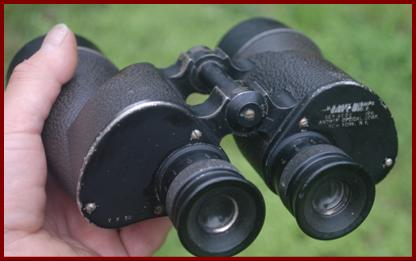
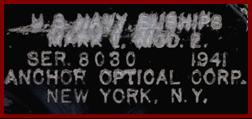
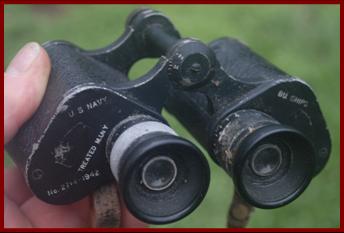
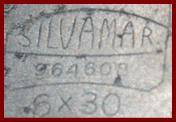
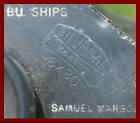
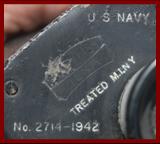

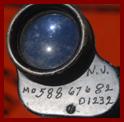
|
1936 Ross No.6 Mk1 4x25 British Military Binoculars |
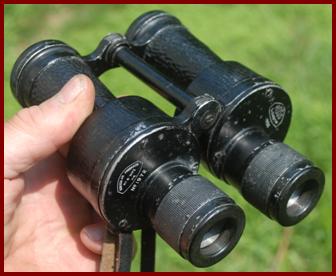
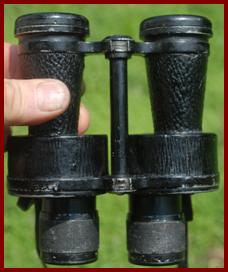
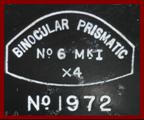
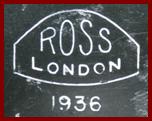
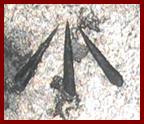
|
My 1936 Ross No.6 Mk.1 4x25 British military binoculars serial no.1972 are broad arrow military property marked. Supposedly 5,000 were ordered in 1936 for anti-aircraft searchlight units (so no reticule/ ranging grid) with some probability of the smaller size of this militarized Steplux model being for female AA battery personnel. Among deficiencies, they tend to fall over when placed upright on a flat surface. They were quickly declared obsolete in Dec. 1936. |
|
1924 Carl Zeiss 18X50 Delfort Binoculars |
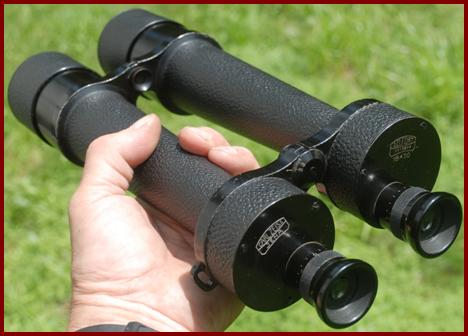
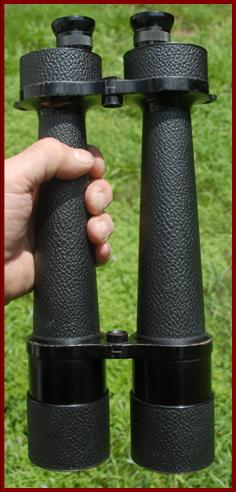


|
I like my 1924 Zeiss 18x50 Delfort binoculars quite a bit. They have that classic double telescope appearance; and at 18x they are an unusually high power; and they work well and look quite elegant. Plus they are quite uncommon. According to my 1928 Zeiss US price list, these cost US $120 in 1928, which is the 2021 equivalent of $1,900.00, and this represented about 5 weeks of an average wage in 1928. Very few people spend 5 weeks wages on a pair of binoculars. I assume these would have been special purpose binoculars, such as for a harbor master to identify the names of ships arriving at his port. |
|
1916 German Busch Stellux US Army Signal Corps Type D Binoculars |
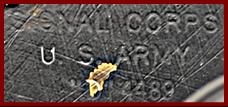

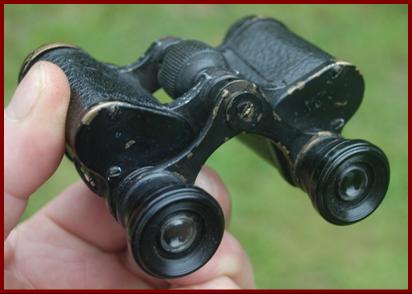
|
KINDLY DONATED TO THE COLLECTION BY Binocular collector JACK INNIS. |


|
My excerpts from the US Army Signal Corps Manual #3 of 1916 show that my pocket size CF German Busch Stellux 8x binoculars (SN) “D”4489 were issued to Signal Corps Field companies as Type D binoculars , and were also sold by the Army Signal Corps to it’s officers for private purchase/ personal gear in 1916/1917. The US declared war on Germany in April 1917, so additional supply shipments of German Busch Stellux & Terux binoculars to the US Army ceased. |


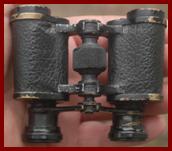
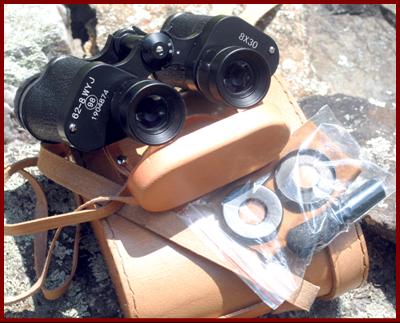



|
FBI #22 Marked SARD ex BU. Aero/ Bureau of Aeronautics U.S. Navy Mark 21 Military Binoculars |
|
As WWII ended, the US had huge quantities of military surplus to deal with. A neighbor who served in a US WWII Army motor pool in the pacific told me they were ordered to install all their vehicle spare parts onto vehicles. Then all these vehicles were promptly placed on barges and taken past the reef and dumped in the sea. Instant solution to pesky surplus. (...plus the US govt. actually had agreements with domestic automotive makers, especially Ford, not to return surplus military vehicles into the US market). The US Surplus Property Act of 1944 Statute 756,50a/US Code gave federal agencies priority to receive any war surplus goods they could reutilize. So, though not commonly seen, it explains the FBI 22 marking and the two federal agency asset labels on my WWII era Navy Mark 21 SARD Bu. Aero binoculars, built by the Kollsman Instrument Co. div. of the Square D Co. under their June 1942-Feb 1943 contract 88-B-320 from the newly created U.S. Navy purchasing agency BU.Aero/ Bureau of Aeronautics. The newer bar code asset tag appears to be in code 39 format, which the DOD/ Department of Defense adopted in 1981 and other federal agencies adopted soon after. |





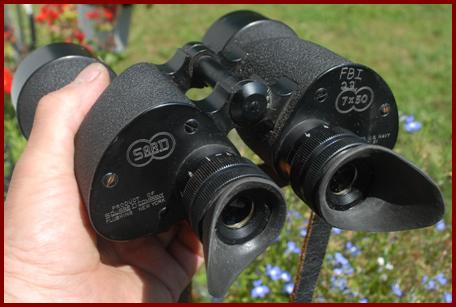



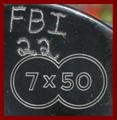
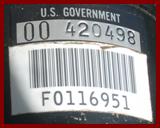

|
(ca1897?) Carl Zeiss Jena DRP DF95 8x20 Military Binoculars with graticule serial # 6973 |
|
Carl Zeiss Jena introduced my distinctive pattern of “bent or sloped shoulder“ DF95 8x20 military binoculars in 1895, and I think mine were made in 1896, with the oculars updated by a 1898 military wide retrofit. My example has a left ocular ranging grid or reticule. The D.R.P. marking is Deutsches Reich Patent. The binoculars would normally have had bakelite ocular cups. |
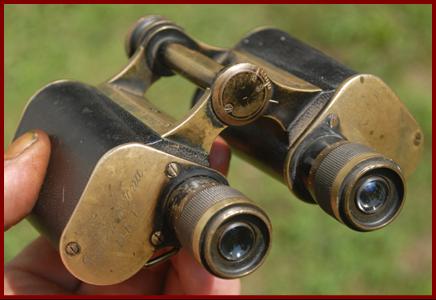
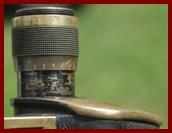
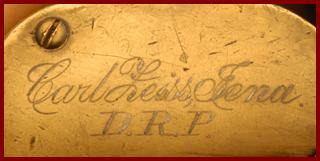
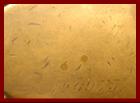
|
the FBI 22 marking is presumably a field office item log number for non assigned equipment: ie: the property log that Agent A logged out binoculars# 22 for an assignment on Jan 5,1965 and then returned them Jan 20,1965. |
|
DF95 and serial “No. 6973” are hard to see |
|
These would have been advanced prism based optics around the beginning of the shift from Galilean to prismatic binoculars. |
|
B.K. Elliott Co Pittsburgher French manufactured 8x26 binoculars |
|
I believe I have documented the contract nature of the post WWII Japanese binoculars industry, with branding dominated by names of or created by importers, distributors, exporters, and retail chains. But this practice really just continued a tradition and European manufacturers from the 1800’s on “ private branded” binoculars for distributors and retailers. B.K. Elliott was a catalog retailer of drafting equipment, barometers, transits, surveying tools, and binoculars. These French manufactured binoculars were branded to B.K. Elliott of Pittsburg, Pennsylvania, USA. |
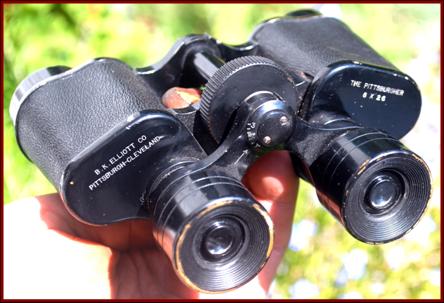

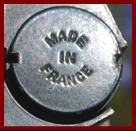
|
U.S. Army Military L3 Contract 7x28 M-24 Military Binoculars |
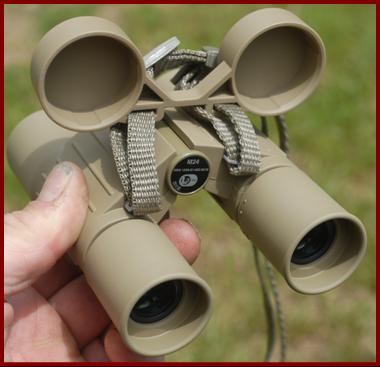
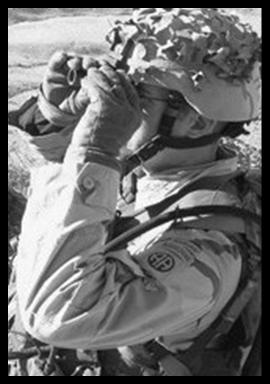
|
While the 7x50 M-22 military binoculars have been the current primary US Army and Marine Corps binoculars since around 1992, my smaller pocket sized M-24 7x28 binoculars have also been supplied to the U.S. Army and U.S. Marine Corps from around 2005. My M-24 binoculars were purchased as a new and unused military surplus contract over-run item tied to NSN (national stock number) 1240-01-602-8216 which had an order value of $2,081,640.00, 9700: DEPT OF DEFENSE, W56HZV: W4GG HQ US ARMY TACOM, DCA Definitive Contract, ONE-TIME BUY FOR 6225 M22 BINOCULARS SOLE SOURCE TO L3 COMMUNICATIONS.1240: OPTICAL SIGHTING AND RANGING EQUIPMENT, W56HZV13C0037, W56HZV12R0505, Monday, October 22, 2012, and their box has a 12/1913 date. These binoculars have internal laser protection. An ARD (anti reflection attachment) was an optional accessory item for these. |
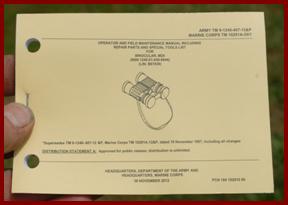

|
M-24 US Military 7x28 binoculars being used by US troops in Afghanistan . |
|
Carl Zeiss Danish HTK/H ć rens Tekniske Korps 6 x 30 b Military binoculars |



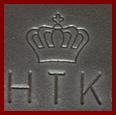
|
My Carl Zeiss West German made 6x30 B binoculars carry the Danish military property crown, and the HTK marking of the H ć rens Tekniske Korps (Army Technical Corps), which from 1909 to 1968 was the Danish military material command. These high quality binoculars predate 1968, (probably made around 1962), and are part of recent military surplus releases. They have a right ocular ranging reticule. Thanks go to Marija at military dealer UAB Militar , in Klap ē dos, Lithuania, for picking me a very a nice example to purchase to document. |
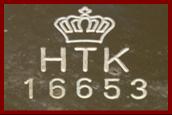
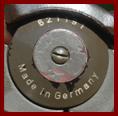
|
“Zeise “Army & Navy” “Day and Night “, “Germany” binoculars |
|
Within the consumer marketing of binoculars, there have always been deceptions intended to appeal to customer perceptions. Like “SEE 100 MILES WITH THESE !” (everybody can see the moon with their naked eyes and it is 237,674 miles away). Or my “ ZEISE ” binoculars (meant to be confused by consumers with Zeiss) “ ARMY & NAVY ” (that is nonsense), “ DAY & NIGHT ” (no particular features for night performance) and “ GERMANY ” (possible made there or possible more deception as doesn’t say “made in”). |
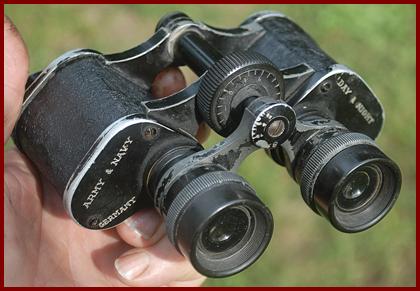
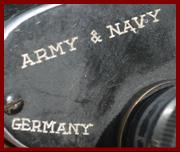
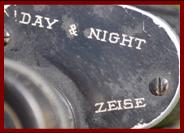

|
1917 Carl Zeiss WWI German Issued Australian Captured & Reissued No.3 Mk 0 6x24 binoculars |
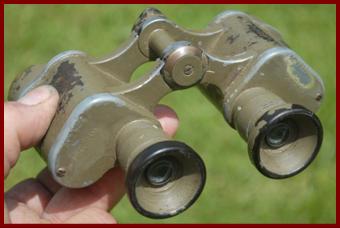
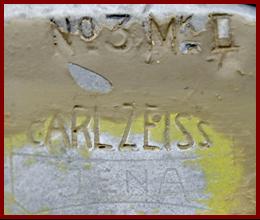
|
My WWI Australian military binoculars are German 1917 dated Carl Zeiss German Military issued ( Dienstglas marked) DF 6x24 military binoculars that were captured and taken into Australian military service, as indicated by D ↑ D Australian property markings, and re-stamped as Australian No.3 Mk 0 military pattern binoculars, which are the model binoculars produced in 1917 by the Zeiss London firm seized and taken over by Ross in 1917 for UK/ Commonwealth military contracts. (None of the normal Zeiss London binoculars had German military Dienstglas markings, and they were marked “Zeiss London”: see our example in Other Binoculars #8), while these are marked Carl Zeiss Jena . These were over-painted green. Both binoculars and tin case are marked T.P.1 , the standard Australian military abbreviation for Troop 1. |
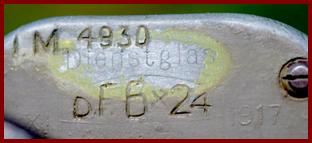

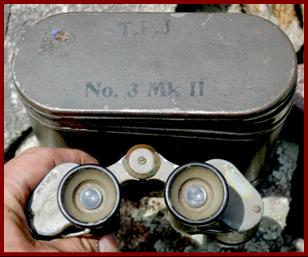

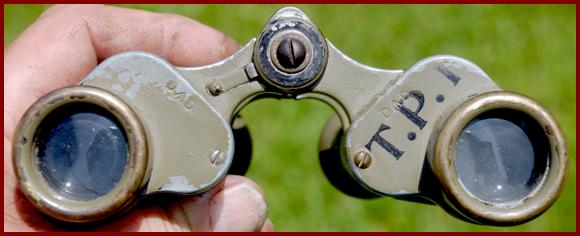
|
Australian D ↑ D military property mark |
|
US ATTD/ Alcohol & Tobacco Tax Div of IRS Property Documented ex 1942 U.S. Military M9 6x30 binoculars W.P.B. (War Production Board) marked |
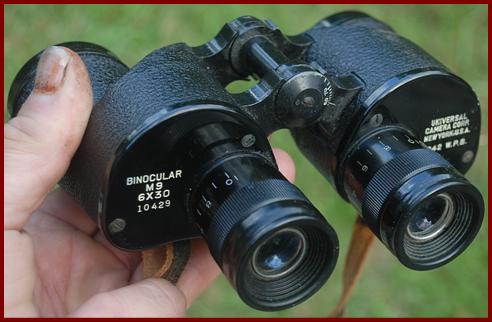
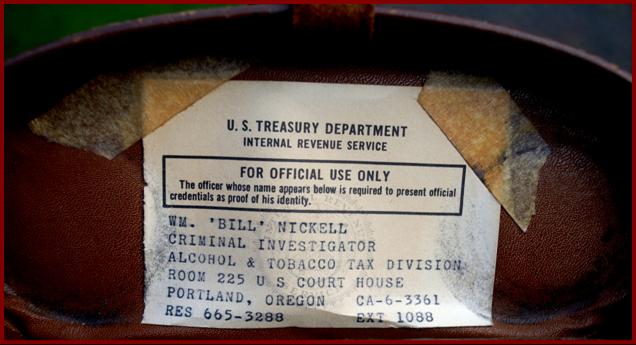
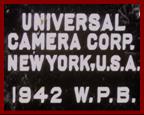
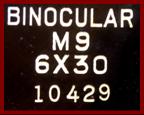
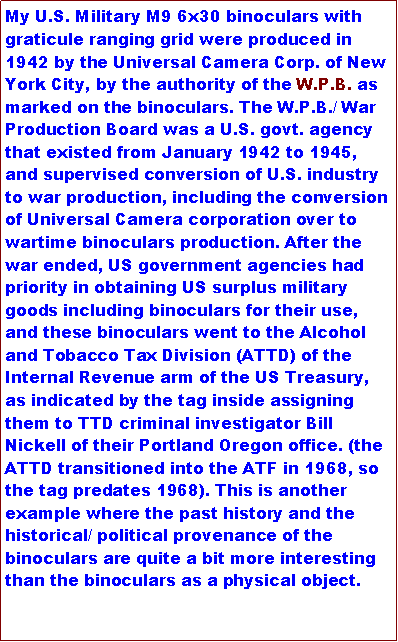

|
U.S. Navy Carl Zeiss Silvarem 6x30 binoculars donated during WWII in 1942 |
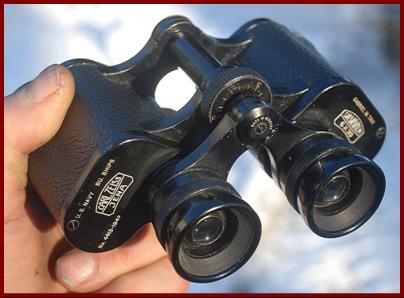
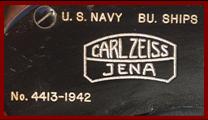
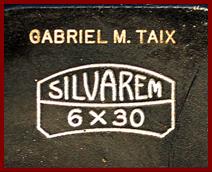
|
This is another one of my civilian owned Carl Zeiss 6x30 Silvarem binoculars that had been donated to the US WWII war effort and had also been taken into service by the U.S. Navy Bureau of ships in 1942, in this case as property no 4413. They were intended to be returned to the owner, Gabriel M. Taix, and they are marked as such with his name, as was the practice on many such donated binoculars. |
|
US Army M-19 Military Binoculars with Graticule/ Ranging Grid |
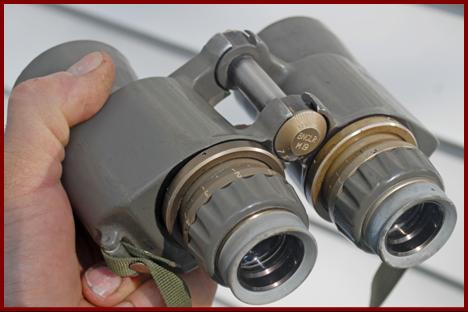
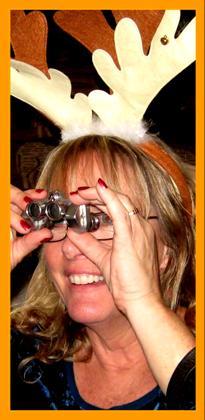
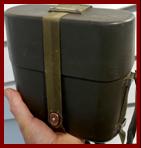
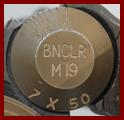
|
The US Army M19 binoculars design was developed in 1955, with left side graticle, and most produced 1970’s-1980’s. These binoculars were designed to be field serviceable by replacing pre-adjusted modules, as shown by the ring attached ocular assembly. |
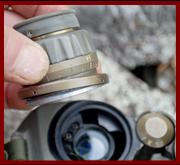
|
My understanding is that the optical components of the M19 binoculars were made in Japan, but assembled in the USA. |